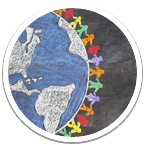Part 5: The Sámi as an indigenous people in Finland
In part five, Senior Statistician and Master of Social Sciences Jovnna Ovllá Hánno Juhan, or Juho Keva, discusses the essence of the Sámi people and the need for information to dissipate prejudices.
The lack of information among the mainstream population is one of the key problems in the promotion of Sámi people’s rights. There is plenty of research data available, as the Sámi people are among the most thoroughly studied indigenous populations. However, this information is not being conveyed to the public. In addition, the Sámi people are experiencing a specific research burden.
Even today, the Finnish school system is still inadequate when it comes to the Sámi people, as there are problems in, for example, the availability and language selection of learning materials. The available learning materials contain very little information about the Sámi, or the information may be outdated and fraught with racist stereotypes. Consequently, the lack of information and knowledge creates a breeding ground for disinformation and hate speech.
Materials supporting learning
See Juho Keva’s slideshow (pdf 590 KB)
Key concepts:
- assimilation
- colonialism
- settler colonialism
- stereotype
- racism
- Sámi dress
- disinformation
- hate speech
- Truth and Reconciliation Commission
- research burden
- indigenous people
Read more about the key concepts.
Reflect on the following questions:
- What kind of information do basic education textbooks offer about the Sámi people?
- What kind of images do the learning materials contain?
- How will these contents affect the prevailing views about the Sámi people and their culture?
- What kind of impact can the lack of information have on hate speech and disinformation?
- What does the term “research burden” mean?




